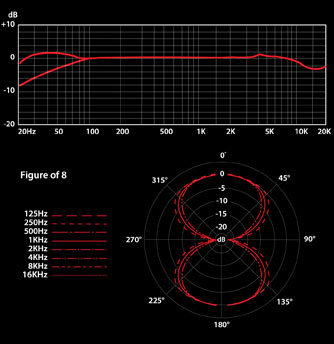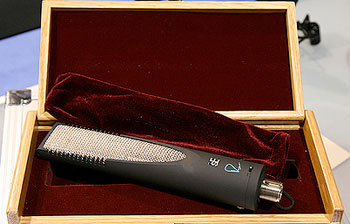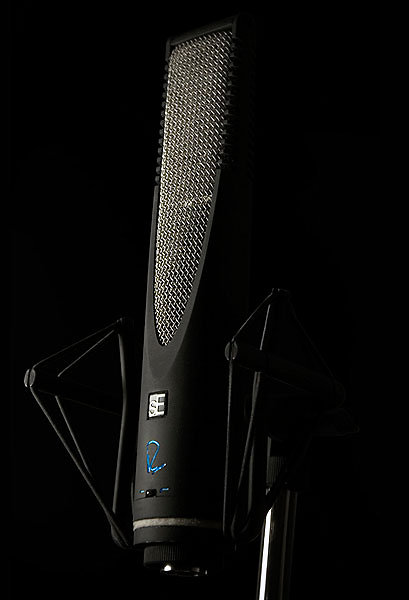SE Electronics - RNR1
1 470,83 €
excl VAT
Out of stock
Contact us for delivery times
Satisfied or refunded until 15/01/2025*
Warranty 3 years
Ribbon Microphone
Studio Ribbon Microphone, The RNR1 among the best microphones in the world in the world of the studio, try it adopt the sE brand until the end!
ARTICLE N° 22228
Specifications
-
Micro A Ribbon SE ELECTRONICS RNR1
-
Designed and manufactured by Mr Rupert Neve and sE Electronics
-
A big technological step ... the first ribbon microphone with true frequency response in acute
-
For many years, ribbon microphones were used by sound engineers for their extremely natural reproduction of the sound source.
-
The sound reproduction differs from condenser microphones, which in comparison will have a sound very "up front", more colorful and have fewer harmonic depth that a good ribbon mic.
-
Even on high-end microphones, loss of frequency response in the treble, depending on the model, from 7 to 10 kHz, has always been a major drawback which is why capacitor microphones dominate the micro market studios.
-
ement.
-
The new circuit designed by Mr. Neve captures high frequencies with very high detail, up to 25kHz, which is 3 times the bandwidth of a classic ribbon microphone.
-
In addition, the input and output transformers designed by Mr. Neve and wound by hand provides enormous headroom and reduce the noise level.
-
Faithful reproduction of harmonics over the entire bandwidth can really capture the "real" sound of the source, which makes micro RNR1 revolutionary status and exemplary reputation.
-
Generator element: Ribbon aluminum, 2.5 microns
-
Polarity: Figure 8
-
Frequency response: 20Hz - 25kHz
-
Sensitivity: -32 dB (reference: 1v / pa ± 1dB)
-
Equivalent noise level: 15dB (A weighted) - Output Impedance: 200 Ohms
-
Load Impedance 1000 Ohms SPL max > 135dB XLR 3 points (pin 2 = hot spot)
Presentation
Designed and manufactured by Mr Rupert Neve and sE ElectronicsUn big technological step ... the first ribbon microphone with true frequency response in aigusDepuis many years, ribbon microphones were used by sound engineers to their extremely natural reproduction of the sound source. The sound reproduction differs from condenser microphones, which in comparison will have a sound very "up front", more colorful and have fewer harmonic depth that a good microphone ruban.Même on high-end microphones, loss of response frequency in the treble, depending on the model, from 7 to 10 kHz, has always been a major drawback which is why the condenser microphones dominate the market studios.Traditionnellement microphones, sound engineers using ribbon microphones, although very expensive, had to accept limitations or the couple with a condenser mic to capture the frequencies aigues.Ces compromises that ribbon microphones have never been widely accepted or used in the first choice in a studio enregistrement.Avec the RNR1, all this is finished! The new circuit designed by Mr. Neve captures the high frequency with a very high level of detail, until 25kHz, or 3 times the bandwidth of a microwave traditional tape. In addition, input and output transformers designed by Mr. Neve and wound by hand provides enormous headroom and reduce the noise level. The faithful reproduction of harmonics over the entire bandwidth can really capture the "real" sound of the source, which makes micro RNR1 revolutionary status and exemplary reputation.
To go further...
Micro tape designed and manufactured by Mr Rupert Neve and sE Electronics.
For many years, ribbon microphones were used by sound engineers for their extremely natural reproduction of the sound source. The sound reproduction differs from condenser microphones, which in comparison will have a sound very "up front", more colorful and have fewer harmonic depth that a good ribbon mic.
Even on high-end microphones, loss of frequency response in the treble, depending on the model, from 7 to 10 kHz, has always been a major drawback which is why capacitor microphones dominate the studios mics market .
Traditionally, sound engineers using ribbon microphones, although very expensive, had to accept limitations or pair it with a condenser mic to capture high frequencies.
These compromises have meant that ribbon microphones have never been widely accepted or used in 1st choice in a recording studio.
With RNR1, all this is over!
The new circuit designed by Mr. Neve captures the high frequency with a very high level of detail, until 25kHz, or 3 times the bandwidth of a classic ribbon microphone. In addition, input and output transformers designed by Mr. Neve and wound by hand provides enormous headroom and reduce the noise level. The faithful reproduction of harmonics over the entire bandwidth can really capture the "real" sound of the source, which makes micro RNR1 revolutionary status and exemplary reputation.
Characteristics
Ribbon generator element in aluminum, 2.5 microns
Polarity Figure 8
Frequency Response 20Hz - 25kHz
Sensitivity -32 dB (reference: 1v / pa ± 1dB)
Equivalent noise level 15dB (A weighted)
Output Impedance 200 Ohms
1000 Ohms load impedance
SPL max & gt level 135dB
XLR 3 points (pin 2 = hot spot)
For many years, ribbon microphones were used by sound engineers for their extremely natural reproduction of the sound source. The sound reproduction differs from condenser microphones, which in comparison will have a sound very "up front", more colorful and have fewer harmonic depth that a good ribbon mic.
Even on high-end microphones, loss of frequency response in the treble, depending on the model, from 7 to 10 kHz, has always been a major drawback which is why capacitor microphones dominate the studios mics market .
Traditionally, sound engineers using ribbon microphones, although very expensive, had to accept limitations or pair it with a condenser mic to capture high frequencies.
These compromises have meant that ribbon microphones have never been widely accepted or used in 1st choice in a recording studio.
With RNR1, all this is over!
The new circuit designed by Mr. Neve captures the high frequency with a very high level of detail, until 25kHz, or 3 times the bandwidth of a classic ribbon microphone. In addition, input and output transformers designed by Mr. Neve and wound by hand provides enormous headroom and reduce the noise level. The faithful reproduction of harmonics over the entire bandwidth can really capture the "real" sound of the source, which makes micro RNR1 revolutionary status and exemplary reputation.
Characteristics
Ribbon generator element in aluminum, 2.5 microns
Polarity Figure 8
Frequency Response 20Hz - 25kHz
Sensitivity -32 dB (reference: 1v / pa ± 1dB)
Equivalent noise level 15dB (A weighted)
Output Impedance 200 Ohms
1000 Ohms load impedance
SPL max & gt level 135dB
XLR 3 points (pin 2 = hot spot)













